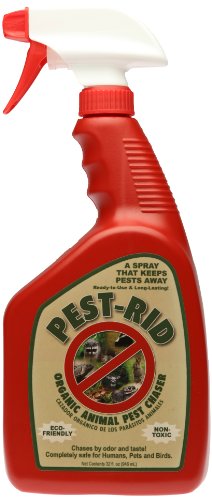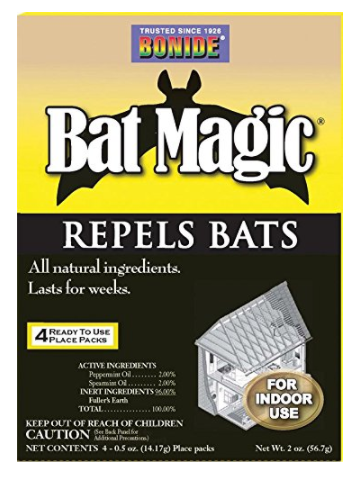The Ultimate Repellent Guide: How to Get Rid of Bats From Your Attic or Household
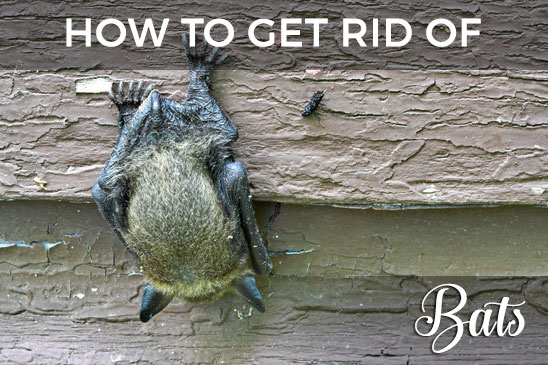
You're here because bats in your household are giving you headaches, right? That's bad news, but we've got some good news for you now: after reading this article you'll know exactly what steps you need to take to make this problem a thing of the distant past.
This guide is suitable for you if you're looking for information on how to get rid of bats in your attic without incurring thousands of dollars in removal costs. On our website, you will learn the different methods that we and other professionals use to get rid of these foul beasts safely and efficiently.
Whether you're a D.I.Y kinda guy/gal, or just want to get the professionals in to remove your little flying friends quick-smart, the following information will guide you in the right way. Click the links in the table of contents to jump to the correct section, or simply start scrolling and taking notes...
Bat Facts - What You Need to Know
Bats are winged mammals most commonly known for their habitation of caves and consumption of various insects over the course of the night. These animals, many of which are either threatened or endangered depending on the species, provide a great deal of color to the nig
Unfortunately, their habit of hiding out in parts of your home or attic can make these helpful critters a homeowner’s worst nightmare.
Unlike certain other household pests, bats cannot be removed simply by applying a poison. In fact, in most states, it is illegal to poison bats because of the service they provide to the ecosystem.
So how can homeowners protect their homes from infestation or safely remove bats in the attic that are already roosting? Here you will learn about the different kinds of bats, the concerns that arise with an infestation, and what you should do if you have bats in the attic or household.
Most Common Bat Species Found In Attics & Homes Across the U.S.
There are more than 40 species of bats common to the U.S. Some of the most prevalent are the Mexican free-tailed bat, which is the state bat of Oklahoma and Texas, and the Virginia big-eared bat, which is, as its name suggests, the state bat of Virginia. And, if you want to know how bat bites look like, then go to this page.
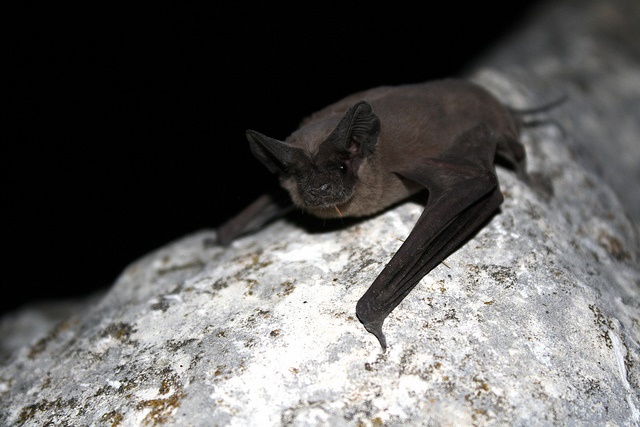
The Mexican Free-Tailed Bat
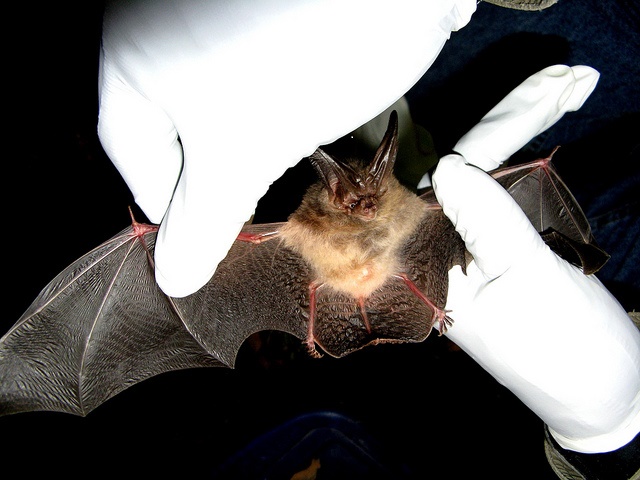
Virginia big-eared bat
These two types of bats are among the most abundant mammals in North America, and the most common bats found in attics across the US.
Though some feast on fruit, most bats are known for their enormous appetite for insects. In fact, a single, little brown bat can eat more than one thousand mosquitoes in a single night. They also act as pollinators for many plants, including the agave plant.
Where Do Bats Live? (when not in your attic or home)
Bats most commonly roost in caves, which provide a safe, enclosed area for them to sleep and raise their young. But they don’t always utilize a cave.
Mexican free-tailed bats, for example, can create a roost in almost any environment provided it is dark and shut-in. This flexibility in habitats means that your home could be at risk for a colony invasion. And since a bat colony can contain anywhere from 40 to twenty thousand bats, the damage done to your home can be extensive.
Evidence That You May Have Bats In Your Attic or Home
Bats seek the safety of dark, enclosed areas like caves to raise their young, called pups, However, when a cave is not available or overpopulated, bats will turn to the household attic because it most resembles a cave.
An attic may even have some advantages over a cave because of the reduction in predators and the advantage of height. If you want to learn more how to remove the bats yourself (DIY), click this page.
The roosts found in attics are composed entirely of females, since they are the ones who raise the pups. Female bats give birth to a single pup anywhere from late April to early June. During this time, the baby bats are helpless and incapable of flight, meaning that bat removal cannot occur during the summer as it would endanger the pups. This is why they will stay in your attic for long periods of time!
The 3 Main Giveaways:
- Seeing Bat Activity during certain times (look at your roof space from the ground during the evening for bats flying around)
- Bat Guano (see it, and smell it)
- Hearing the bats (at night time in most cases)
Seeing Bat Activity Around Your Home
The most obvious sign of a bat infestation in your house is, of course, seeing a bat.
Note: A single bat might not indicate a full-blown roost.
So how can you tell if your home has become a haven to a bat colony? Looking for the most obvious sign: bat guano (droppings)
Bat Guano (Poop/Droppings)
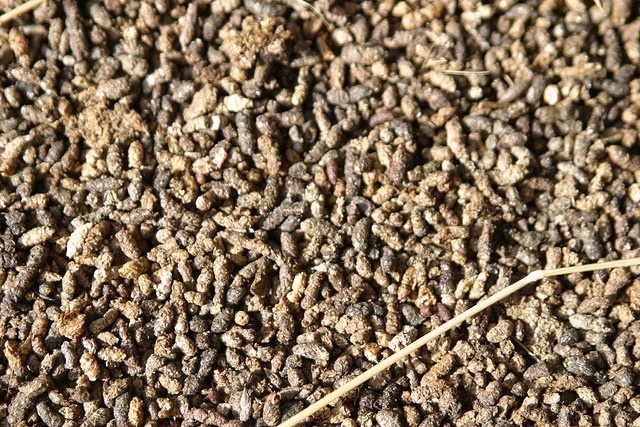
First, most homeowners tend to notice the odor that a bat colony can create - it can be extremely pungent!
While bats in your attic themselves do not possess a particularly strong odor, their waste, in the form of guano and urine, is extremely pungent.
While bats aren’t destructive like rodents, an accumulation of their guano can corrode wood and drywall and be a source for mold growth.
This short video will show you how to identify bat guano from other rodent droppings:
Hearing the Bats
Homeowners can also identify bat activity based on noise, especially if the colony is on the larger size. In general, bats, when in smaller groups, are quiet creatures (unlike other attic rodents such as squirrels) so picking up their noise is generally a tough way to find them.
Other Areas You May Find Bats In Your House
Besides the attic, there are several other places around the home bats like to congregate. If you suspect a bat colony is residing in your home, thoroughly check the following areas for bat activity and attempt to observe how they are getting in the house:
Bats In The Chimney
Chimneys are a common roost site for bats, so if you find yourself in this situation, it is imperative that you do not light a fire. Doing so can cause bats to flee the chimney by entering your house.
Other Common Bat Hideouts
Bats can also take refuge under Spanish barrel tiles, which are commonly found in the south of the country. Removal under these circumstances requires attention to detail and proper training, so do not attempt a DIY removal in this situation.
In addition to occupying the outer parts of a house, a bat can also make its way into the living area of your home or garage. Removal of a bat from a living space requires care, both for you and for the bat. Tips for removing a trapped bat can be found below.
Health Risks Arising From Having Bats In Your Attic & Home
Though bats provide a helpful service to the environment, no homeowner wants to surrender their attic to a roost of nursing bats. Besides the inconvenience of removing bats, they can also pose a number of health risks to the inhabitants of the home.
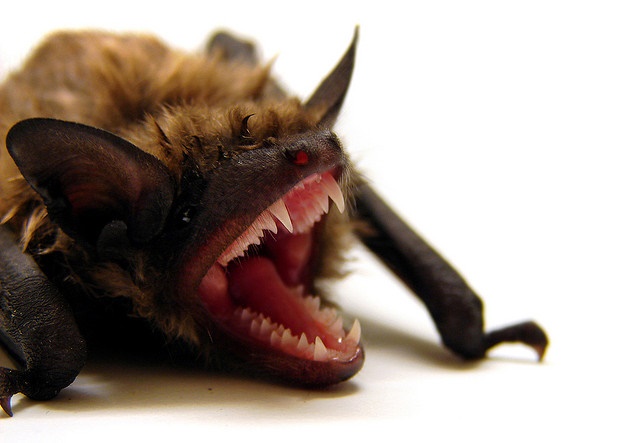
Bat Guano Disease
Bats are mammals which means that they shed hair on a regular basis. This hair (plus the mold that can grow on their guano) can be an allergen trigger for sensitive individuals.
In rare cases, that mold can trigger a disease called Histoplasmosis, which is an infection of the lungs of those who breathe in the mold spores found on bat waste.
This is called ‘bat guano disease’ and is most dangerous when bat poop builds up in large volumes (which can happen fast with infestations)
Bats in your attic can also carry fleas, ticks and mites, which can create a secondary pest problem for your home.
Rabies
Another threat that homeowners must consider is that approximately one percent of bats carry rabies. While this is a small amount, all it takes is a single bite or scratch from an infected bat to pass along this deadly disease. Bats should never be handled by anyone other than professionals to avoid any possible transmission of disease to your family.
If you have a bat infestation in any part of your home, never try to handle the creatures unless you are a trained professional - its not worth the risk of rabies.
When Are They Active? (when can I hear them?)
Bats are most active in early dawn and dusk hours. Most homeowners will not hear bats at night because once the sun sets, the colony will vacate the nest in search of the insects that come out in the evening. This hunt will keep them out all night, and they will not return to their roost until the sun starts to rise.
Homeowners would be able to hear them around those times and could visually confirm a bat infestation by stepping outside just as the sun sets. Bats occupying the attic would stream out of exit points near the roofline at that time.
How do they get inside the attic?
Ever wondered how those bats get in your house or attic anyway? There are many points of entry around your roof line. Those exit points also act as entryways for bats.
Bats can enter a house through a gap as small as 3/8 of an inch. Holes this size can be found in fascia boards, ridge caps, loose or broken windows and around vents. Since it's illegal to poison or harm bats, these entry and exit points are crucial to securing your home against a bat invasion.
Bat Removal - How to Get Rid of Bats
If you're wondering how to get rid of bats in your attic, consider the following steps. As mentioned previously, bat colonies cannot be removed during the summer because of the threat to the flightless bat pups, however once they are grown, there are a variety of ways to ensure your home stays bat free the next year.
Follow these 5 simple steps to get rid of bats:
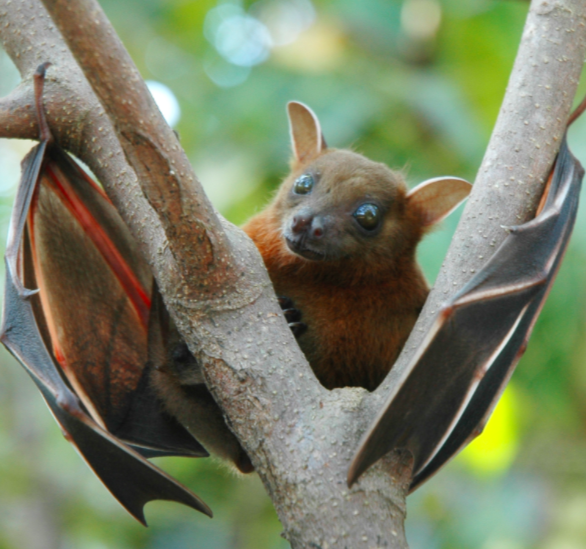
- Determine the species of bat/s. Different species might require a different approach.
- Locate the entry point in your home.
- Carefully remove the entire colony of bats using traps or repellents.
- Completely seal up their entry point.
- Clean up the pest's droppings.
Now, let's get into more detail on how to remove these unwanted pests from your home. Follow these steps carefully as these animals can be a handful to deal with.
Get Them Out
First, the entry and exit points the bats favor should be carefully noted. Make sure not to seal these access points while the bats are inside. If a bat dies in your home, you will be subject to an unpleasant odor for several days as the bat decomposes. An entire colony would make the house unliveable, plus would be an inhumane solution when there are so many other ways to remove bats.
Bat removal depends on your location. If your state experiences a cold season, then bats in the attic will migrate as temperatures cool, leaving you free to seal up any cracks or entry points the bats were using. If your state stays warm year-round, however, bats will not migrate. This will make removing them slightly more difficult, as sealing off entry points will have to be done over a series of days to make sure none are missed.
One way to identify entry points that may be too small to see is to look for an accumulation of guano or urine stains underneath the point. These stains will often lead homeowners to a crack they would not have seen otherwise. All of these access points need to be noted, and sealed to prevent the bats in your attic from returning and reoccupying the roost (which leads us to the next step)
Seal All Entry Holes
Once you are 100% certain that there are no bats left in your attic, its time for the most important part- sealing your house.
When sealing entry points, make sure to wear protective gear, such as thick gloves in case of a bite, a long-sleeved shirt, a respiratory mask and eye goggles. A tall ladder and fresh boards, caulk, and screening material may be needed depending on where the bats are gaining entry.
While this method will prevent the bats from coming back, it does not address the waste left behind. A single bat can produce 20 or so pellets of waste per night, so an entire colony can leave behind a mountain of guano.
The Clean Up
Now its time to get rid of that awful bat poop, which may have been building up for a while.
As previously mentioned, their droppings can cause health risks (from the mold resulting), so make sure you where protective gear, and a respirator when clearing the guano.
Its highly likely that there will be an awful stench even after you’ve cleaned up the mess, so an enzyme cleaner will need to be used.
So in summary, in getting rid of bats, we highly recommend that you wait until they have left your house (which they will do eventually) and then seal up all entry holes. Problem solved.
But maybe you can’t wait until they leave? Maybe there are hundreds of them, messing up your attic, creating a horrible stench, and threatening your family?
If you find yourself in this situation, its best to get in touch with a wildlife removal expert, who will do the job fast and give you piece of mind. They will utilize methods such as special one-way bat doors (and exclusion door)and traps, and they will clean seal up your attic up correctly, leaving your attic and house bat free.
Do It Yourself Bat Removal? (How to Remove Bats Yourself)
Getting rid of bats DIY style It’s no always recommended, but Single bats can be carefully removed from the home if they accidentally find their way inside providing you follow a few critical steps.
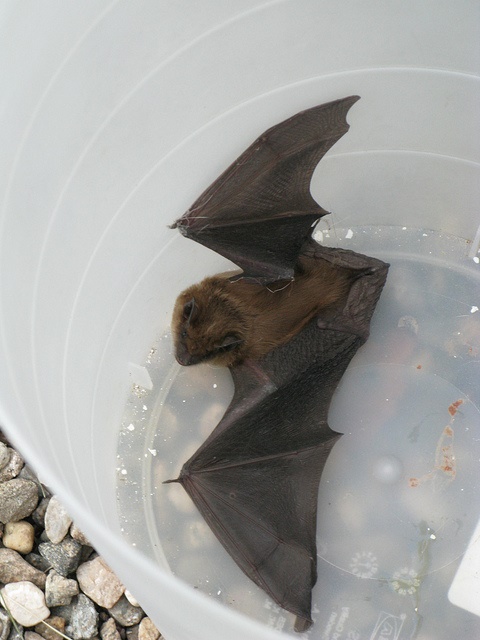
Firstly - close off the room the bat is in to prevent it from flying around the house. Next, make sure to approach the bat only if you are wearing protective gloves. A scared bat could bite as a defensive action to being cornered. You don’t want that. Using a small net or a towel, gently cover the bat and scoop it up, being careful not to squeeze it too tightly.
Once the bat has been caught, you can simply release it outside or place it on a tree if the bat will not fly away on its own. Bats cannot easily lift off from the ground, so placing the bat on a higher surface allows it to climb to a sufficient height for takeoff.
After removal, a thorough examination of the attic and eaves is needed to ensure the bat was a sole invader and not part of a larger colony.
Check out our top 10 DIY removal tips when dealing with attic pests such as bats yourself.
How to Keep Bats Away (The Best Repellent)
The following 3 methods that we will talk about include:
- Bat Repellants and Deterrents
- Bat traps
- Bat exclusion (the best way)
- Bat Traps
- Bat Exclusion
Bat Repellants and Deterrents - How to Repel Bats
Various repellants can also be employed to keep bats from roosting in carports and chimneys. Mylar, a kind of flash tape, discourages bats from touching down on the areas it covers. Fine screens and bright lights also repel bats.
Interestingly, most commercial brands of bat repellent have a very poor track record. Mothballs have been shown to be effective, but large amounts of them can trigger allergic reactions and be dangerous to both humans and household pets.
Sound machines are also marketed as being particularly effective against bats, however, their effectiveness varies from one case to the next. These machines emit an ultrasonic frequency that supposedly drives bats and other pests away.
While you can attempt to remove a bat colony on your own, there are many risks to doing so without professional help. Skilled, professional help should always be employed when removing bats.
A professional bat removal expert will know and understand all local laws relating to safe and ethical bat removal. They will also have the equipment needed to seal up every hole and entry point the bats were using. Plus, their experience and equipment will help remove every unpleasant trace of bat habitation, especially the guano left behind.
For more information on natural bat repellents (using household items) check out this article
The following video includes some great HUMANE bat removal tips for you to follow when removing bats from your home. You will be able to learn a few techniques in dealing with these kinds of animals in the future. They can be dangerous if you do not know what you are doing and if you are not prepared with the right kind of information when facing these creatures. So, be safe when it comes to these pests and watch the video down below to learn more about how to avoid harming yourself and the animals.
Killing Bats - Why You Shouldn't Do It
Unfortunately the DIY bat remover will commonly become frustrated when they find repellants and deterrents don’t work, and they will attempt to kill those bats. Typically, there are some repellents that actually work but that is not the case here.
Typically, one may use bat poison, bat bombs, or other forms of bat extermination - all of which are not a good idea.
Poison is a bad idea because bats feed on live insects - so they are unlikely to nibble on a bar of poison- it just doesn’t happen. In the unlikely event that they do take the bait, they will die, and now you have a decomposing bat carcass in your attic. Throw into the equation another 50 dead bats (not uncommon) and you have a serious problem, and serious smell, coming from your attic.
Lastly - it’s against the law. Yes, it may be acceptable to kill pests such as house mice or even roof rats if your game, buts its just not the case with bats. Nearly every state in America has laws forbidding you to poison these creatures, as they are an important part of our ecosystem. There's a reason we have bat conservation groups.
In many cases, homeowners insurance will cover at least part of the cost of bat removal.
Bats provide a great deal of service to the environment, so you can return the favor by removing them in a kind and humane way via professional help. A company specializing in large pest removal will be able to secure your home against future colonization and will minimize stress on you.
By now you should have a great idea of how to get rid of bats like a pro. If you suspect you have different pests invading your attic, click here for tips on how to best manage your pest problems.

